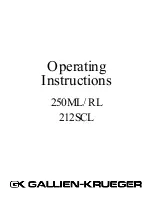
Page 27 of 56
4.
Insert Q4 into the circuit board. Fasten Q4 to the heatsink using a 6-32x1/2”
screw. You can thread a Phillips driver from the front to the back of the board to
tighten this screw. Tighten all 5 mounting screws as you make sure that Q4 is
perpendicular to the plane of the board.
5.
Solder the 3 leads of Q4 on the solder side of the board.
6.
If you previously moved T9’s heatsink from vertical, return it to vertical so there
is no chance for it to bump into T8’s heatsink.
Figure 24-threading the screwdriver to Q4’s mounting screw
7.
Inspect your soldering from both sides, making sure that there are no solder
bridges between the leads of Q4.
8.
Locate Q5, an IRFP140, the insulator, and the 6-32x1/2” sems screw used to
mount Q5 to the heat sink.
a.
Insert the screw through Q5’s mounting hole from the front side. Use that
screw to locate the insulator onto Q5. For Q5, the insulator takes the place
of thermal compound and it isolates the connection to the drain from the
heatsink.
b.
You’ll notice that one side of the insulator is a bit tacky. I like to put that
side toward Q5 as it keeps it in place while I’m assembling Q5 to the PCB
and heatsink.
c.
Assemble them as shown in Figure 25. Insert Q5 into the holes on the
PCB and snug, but don’t fully tighten the mounting screw. Solder Q5’s
leads into the PCB.
Figure 25-Q5 with 6-32x1/2" mounting screw and insulator
9.
“Butter” the back of Q19, a TIP32C PNP power transistor with thermal
compound.
















































